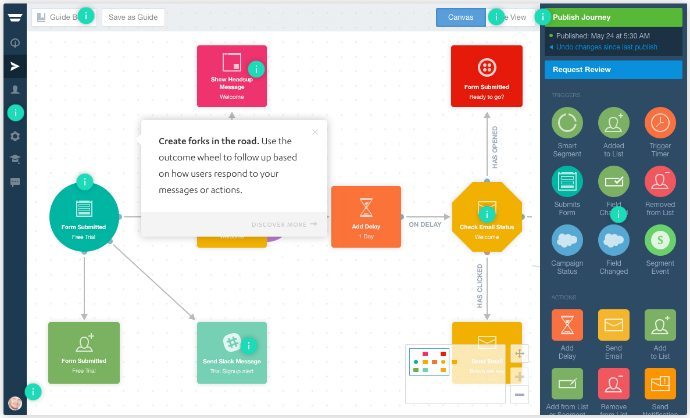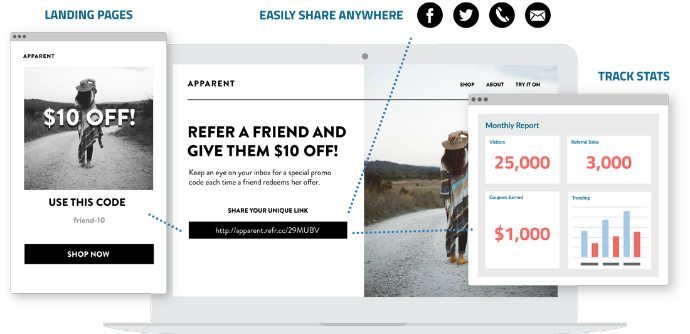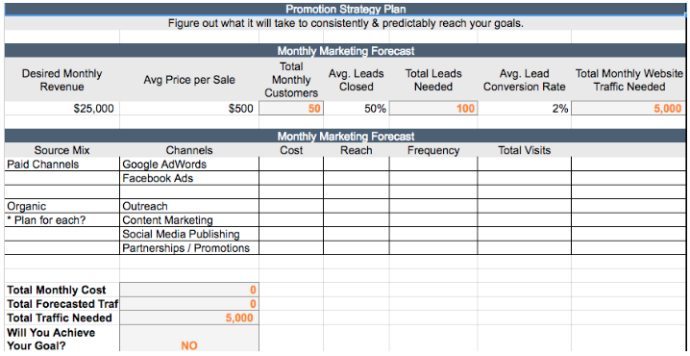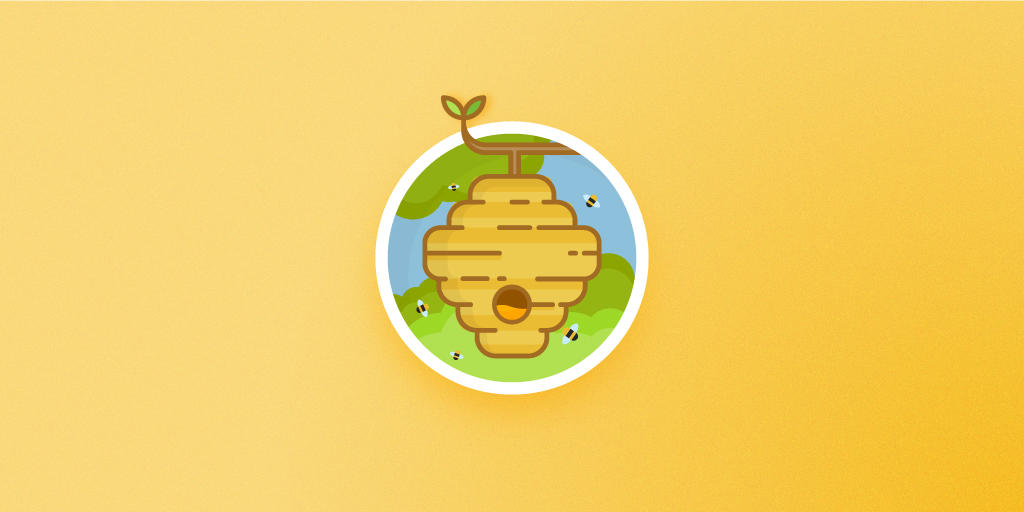July 22, 2016
Customer Acquisition Examples
The Lean Startup was published back in 2011 as a guide to explain how new startups should look, work, and grow. However, one of the most interesting sections focused on the three engines of growth and how these were the most reliable (and predictable) methods of success for new companies. In each case, new customers effectively stem from the profits (and efforts) of your past customers.
- Viral: Member use drives powerful network effects to reach a critical mass
- Sticky: A sticky-like-a-bee-hive product drives high customer retention and word of mouth growth
- Paid: When you spend to acquire a customer for less than their lifetime value to your bottom line
Here are 3 examples of how notable companies used each to make it big (along with how you can do the same).
1. How Facebook went viral
True viral products are incredibly rare. But for those few, there’s no greater example than Facebook. Facebook initially launched as the antithesis of MySpace. It was muted where MySpace was colorful. It was understated where MySpace was brash. And it was closed where MySpace was open. Famously originating on the Harvard campus, it grew, slowly at first; strategically expanding to select universities to ensure pent-up demand was met at each stage of the game. Facebook took exclusivity to the next level by restricting access to only those fortunate few with a specific college’s domain name. They then combined this with the inability for ‘outsiders’ to view content unless they were logged in. They wouldn’t expand into a new segment until they dominated the existing one. From Harvard to the Ivy League. Then all colleges. Then high schools. And finally a few select Valley companies before expanding to the general population. This leapfrogging strategy created a slow build that gathered momentum, allowing Facebook to develop the most elusive form of promotion: word of mouth. (They also benefited, no doubt, by MySpace’s drastic drop in quality around the same time.) By the time the platform finally opened up, there was enough leverage to springboard the userbase forward dramatically. They also had proven viral loops in place that utilized a series of automated emails to increase engagement and get new people to join. This closed-to-open tactic proved so successful that years later Pinterest would copy-cat the approach, albeit with requests for invitations, to keep the numbers down.
Takeaway
 Marketing automation platforms (like Autopilot) help provide an infrastructure to automate both emails and social steps, creating your own viral loop. You can construct onboarding funnels to help amplify product engagement and customer word of mouth.
Marketing automation platforms (like Autopilot) help provide an infrastructure to automate both emails and social steps, creating your own viral loop. You can construct onboarding funnels to help amplify product engagement and customer word of mouth.
2. How Dropbox was sticky
Dropbox tried PR. Nothing happened. They tried ads. Didn’t work. (And were mostly unprofitable.) Then they tried rewarding referrals, inspired by PayPal’s similar approach. And they struck gold. Within just 15 months, they shot up from a respectable 100,000 users to a market-leading 4 million. Dropbox apparently got a few things right along the way. First, the platform’s network effects are implicit, where the value of a file-sharing program obviously enhances as the user base grows. All new users were prompted, directly in the onboarding process, to begin sharing their information with new people. However they also incentivized each referral, including extra (free) storage for each new account you brought online. Despite obviously growing their user base, instead they successfully framed the sharing action as a benefit to each user. These referrals single-handedly increased signups by 60%! Dropbox also removed friction wherever possible. They even willingly gave away free storage for actions like connecting your social accounts, another ‘micro-conversion’ that moves people closer to ultimately referring the product and bringing on new accounts. For example, the sharing and referral process was seamless, easy for both parties to attain their benefits as quickly and easily as possible. All of these benefits combined meant that Dropbox basically advertised itself every time someone used it. It’s also inherently ‘sticky’, meaning repeat usage ensures high retention and low churn.
Takeaway
 DIY solutions like ReferralCandy are inexpensive alternatives to quickly deploying referral campaigns that drove much of Dropbox’s sticky success. Customers get personal referral links, which seamlessly track all new accounts or actions that originate. Then they’ll automatically deliver your pre-set rewards, literally taking care of all the heavy lifting and allowing you to run a Dropbox-like referral campaign for ~$100 bucks a month.
DIY solutions like ReferralCandy are inexpensive alternatives to quickly deploying referral campaigns that drove much of Dropbox’s sticky success. Customers get personal referral links, which seamlessly track all new accounts or actions that originate. Then they’ll automatically deliver your pre-set rewards, literally taking care of all the heavy lifting and allowing you to run a Dropbox-like referral campaign for ~$100 bucks a month.
3. How Groupon used paid
Go ahead. Laugh it up. Groupon’s an easy target these days, as their IPO was surrounded by controversy and their stock price keeps sinking since then. However it’s important that their meteoric rise isn’t overlooked. Also, the fact that they still went public. In one year alone they grew 228%. And it’s easy to forget all of the excellent customer acquisition hacks they employed, summarized excellently on Kissmetrics:
- The sign-up only landing pages
- The viral sharing loop after purchasing a Groupon
- The daily emails
- The witty, whimsical copywriting
However what really shot Groupon into the stratosphere, was paid acquisition. According to SEC filings, they spent $179 million to acquire 33 million new subscribers in a single quarter. Paid advertising is the one of the most popular, and arguably the most predictable forms of customer acquisition, employed by companies in-and-outside of tech. And through online mediums, you’re able to easily track the cost of acquisition against the lifetime value of each customer.
Takeaway
 Quant-based marketing is a simple framework to help you determine _exactly _where paying customers are going to come from. Running through the exercise of laying out all your channels or activities will also quickly highlight something important…scale (or rather, the lackthereof). A realistic forecast of future traffic and customers will show you that if you’d like to hit the ambitious goals and objectives your company has set, it’s often going to take paid acquisition to do it. Start here with the plan, and determining the all-important customer acquisition ratios to make sure you’re not advertising blindly, but profitably.
Quant-based marketing is a simple framework to help you determine _exactly _where paying customers are going to come from. Running through the exercise of laying out all your channels or activities will also quickly highlight something important…scale (or rather, the lackthereof). A realistic forecast of future traffic and customers will show you that if you’d like to hit the ambitious goals and objectives your company has set, it’s often going to take paid acquisition to do it. Start here with the plan, and determining the all-important customer acquisition ratios to make sure you’re not advertising blindly, but profitably.
Conclusion
Figuring out the right customer acquisition tactics is never easy. But these three tried-and-true approaches are already battle-tested by some of the fastest growing startups ever. Best of all, replicating these same strategies isn’t restricted to well funded teams of engineers either. With a few simple tools and good frameworks to emulate, you too can start employing these proven growth strategies in no time. What were your biggest takeaways from The Lean Startup? How have you used viral, sticky, and paid growth engines in your business? Let us know in the comments.













